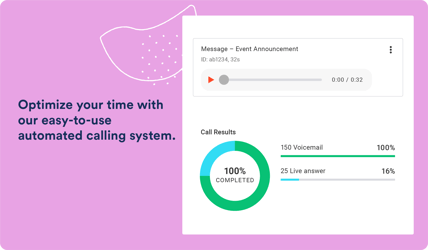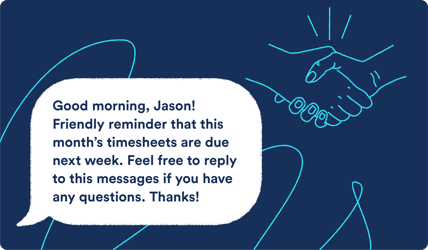
Today’s college students prefer texting over just about any type of communication. Text is fast, it’s instant, and it’s easy to manage. From an educator’s standpoint, it’s a way to share critical information with students who are already pressed for time.
Research shows that today’s college students prefer text messaging. In fact, they don’t often even respond to more traditional outreach, such as phone or email.
Consider these statistics:
- Three-quarters of all college-aged individuals would choose a text-only phone over a voice-only phone.
- The text services most valued by this group are appointment reminders, surveys, notifications, and promotions.
- Students think that text is less invasive than other types of messaging.
- Students like text reminders because it’s one less thing to manage.
How Colleges Can Benefit From Text Messaging
With something as critical as education, it’s crucial to stay on top of things. For colleges, using text messaging to reach students is a way to connect with them on their terms and help them keep up with the challenges of completing their studies.
Some of the ways a text messaging service can help include:
- Registration and tuition reminders
- Scholarship and bursary deadlines
- Class updates and cancellations
- Extreme weather alerts
- Orientation/ student welcome messages
- On-campus residential alerts
- Event invitations, such as parent/family week
- Team tryouts
- Examination make-up dates
- Communicating with alumni
- Coordinating meetings and appointments
Whether your school welcomes hundreds or thousands of students each year, establishing an efficient way to communicate is essential. From the student’s standpoint, a text is preferred. From the college’s perspective, it’s a way to ensure the message is received.
Why Texting is Better Than Other Types of Communications
The alternatives to text messaging college students are less reliable as they require more effort on the part of both student and staff.
For example, when exam results are posted online, it might take students a while to access them because it’s not top-of-mind. A delay like this can result in applications not submitted on time and opportunities lost.
Physically posted notices might not be read immediately, and students who are away from class at the time might not receive the information they need.
Emails might not be opened for several days after sending, so pressing or time-sensitive matters might slip through the cracks. Telephone calls might go ignored and voicemails unheard.
Text Messaging Business Features to Optimize Your Efforts
A mass-text-messaging service like Text-Em-All delivers all the business features you need to maintain communication and increase engagement with your student body.
Some of these features include:
- Advance scheduling: schedule messages in advance to save time and effort.
- Easily manage responses: it’s a two-way conversation, so any problems or issues can be dealt with quickly.
- Text from your office number: your students will always know and trust where the message is coming from.
- Use templates to save time: reduce errors and apply personalization to your messages using stored templates.
Inform, Enrich, and Empower Your Students With Text Messaging
Whether the objective is to inform or enrich the student experience, a message ignored is an opportunity missed. When college students are engaged with every aspect of their studies and campus life, they are more likely to succeed.
If you would like to learn more about text messaging for your college or school, reach out today.











